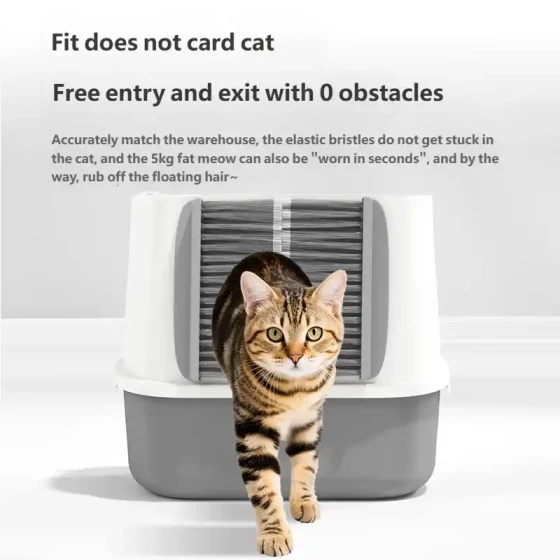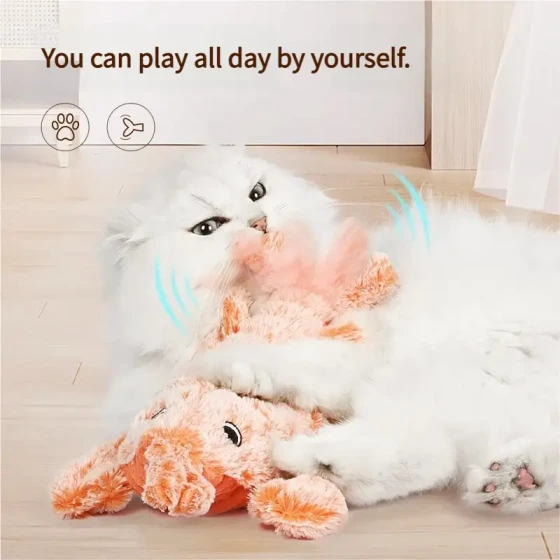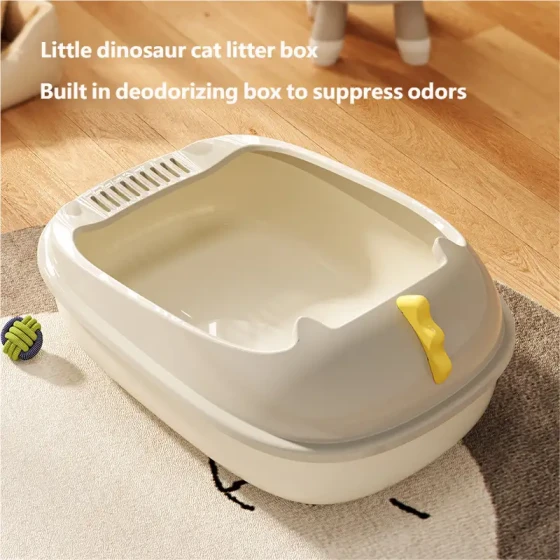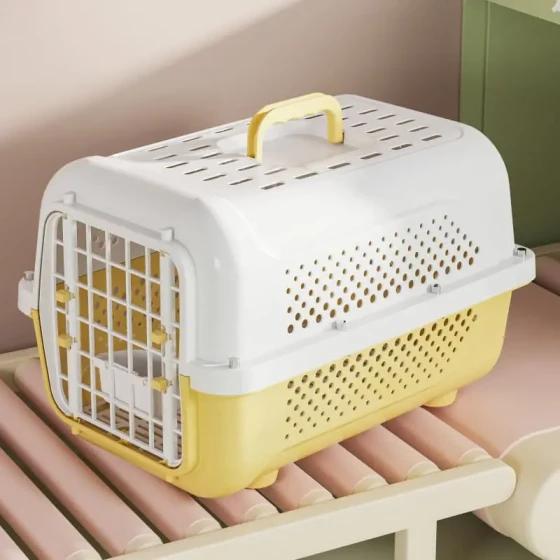Cheaper Pets Cats_ Do You Know These High Cost-Performance Cat Breeds
Want to have a cute cat but worried about your wallet "bleeding"? Actually, the “cost performance” of raising a cat shouldn’t only focus on the initial purchase price, but also on the cat’s health, daily maintenance, and potential medical expenses. For cat lovers on a budget, Chinese rural cats (especially the smart and resilient tabby cats) and cats adopted through official channels are the most cost-effective choices. They are not only affordable (even free), but usually have stronger adaptability and healthier physiques, greatly reducing later raising costs.
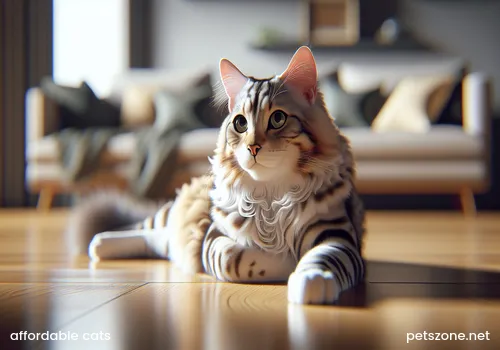
Raising a cat is like starting a journey full of surprises and challenges. Choosing a cost-effective cat means you can enjoy the company of your "cat master" while calmly facing various raising expenses, making this love last longer and be more warm.
The Big Reveal of "Hidden Expenses" in Raising Cats: Don’t Just Focus on the "Cat’s Price"
Many people, when considering raising a cat, often only focus on the cat’s "price," thinking that buying a cat for a few hundred yuan is the end of all worries. Little do they know, the major costs of raising a cat usually hide in daily care and medical maintenance later on. Just like buying a car, the sale price is only the first step; fuel, maintenance, and insurance are the "big expenses" you face every year!
Let’s list some major "hidden expenses" in cat raising:
- Purchase cost: This is the most obvious expense, ranging from free adoption to tens of thousands for show-grade purebred cats. But this may account for a much smaller proportion of total costs than you imagine.
- Daily consumables:
- Cat food: The cat’s "staple food" is a fixed expense. Cheap cat food might cost around ten yuan per pound, expensive ones can reach fifty to sixty yuan. Monthly, a grown cat’s food expense is roughly 100-300 yuan, depending on its appetite and the quality of the food.
- Cat litter: Essential for keeping the home clean. Prices per bag range from several tens to over a hundred yuan, needing about 1-2 bags per month.
- Treats and toys: For the happiness of your master, occasionally buying freeze-dried snacks, cat sticks, teaser wands is also a considerable expense.
- Medical care: This is the real "money pit" and the key factor reflecting "cost performance."
- Vaccines and deworming: Kittens need multiple vaccines and deworming sessions; adult cats also require annual booster vaccines and regular deworming. Costs range from tens to hundreds of yuan each time.
- Neutering surgery: If you don’t plan to breed your cat, neutering is necessary to effectively avoid many reproductive diseases and behavioral problems. Neutering male cats usually costs 400-800 yuan, females 800-1500 yuan, depending on the clinic and surgical method.
- Regular check-ups and emergencies: Annual health checks are very necessary, costing about 200-500 yuan. If your cat falls ill, such as catching a cold, gastroenteritis, or more severe kidney or heart disease, treatment can cost from hundreds to tens of thousands yuan, instantly making you feel like you "went back to square one" overnight. Many purebred cats have genetic defects that bring various hereditary diseases, resulting in huge medical expenses later, basically "paying money to suffer."
- Other expenses: Such as scratching boards, cat trees, cat carriers, airline-approved crates, home feeding services, etc. These miscellaneous expenses add up to a considerable amount.
Therefore, truly cost-effective cats are those "healthy babies" that can save you a lot on later medical and care costs.
Recommended High Cost-Performance Cat Breeds: Who Is Your "Money-Saving Cat Master"?
Among many cat breeds, a few types stand out as the first choice for cost-conscious cat owners due to their excellent physiques and affordable prices.
1. Chinese Rural Cats: The National "Cat Master" Leader
Speaking of cost performance, Chinese rural cats (aka “native cats”) absolutely take center stage! They are a cat population formed through thousands of years of natural selection and survival of the fittest, possessing strong vitality and adaptability.
- Quick advantages overview:
- Price: Nearly free, available via adoption or help from friends and neighbors.
- Physique: Strong resistance, few hereditary diseases, small health issues like cold or fever can be handled themselves, truly the representatives of "iron stomach" and "tough as nails." Compared to some delicate purebred cats with fragile digestive and respiratory systems, rural cats are a godsend for beginner or lazy cat owners.
- Adaptability: Not picky eaters; great adaptability to environment and climate. Whether you live in a big villa or a small apartment, they can be content.
- Personality: Mostly smart, alert, loyal; able to quickly integrate into families and build deep bonds with owners.
- Appearance: Don’t think rural cats are "uncultured," their coat patterns and looks are diverse—from classic tabby cats, big orange cats ("nine out of ten oranges are fat, and the tenth is especially fat" is no joke), to gentle calicos and handsome black cats, there’s always one to capture your heart.
- Representative breeds:
- Chinese Tabby Cat: Certified by CFA (Cat Fanciers’ Association), a native Chinese natural breed, looking like a miniature little tiger, wild yet with a hint of cuteness. They are smart, brave, loyal to owners, excellent mouse catchers, and good companions.
- Orange Cat: Whether male or female, any orange-colored cat is called an orange cat. Known for their "chubby" body shape and healing personality, they usually love to eat and are very affectionate, the undisputed "warm hand treasure."
- Calico Cat: Usually cats with black, red (orange), and white patches, most are female. Calicos have variable personalities, some lively, some aloof, but generally good-looking.
2. Adoption: Let Love Come Home, Save Money and Worry
Besides Chinese rural cats, adopting a cat is also an excellent way to achieve a high cost-performance rate in cat ownership.
- Quick advantages overview:
- Low cost: Many stray animal rescue centers or individuals have low adoption fees (usually covering vaccine, deworming, neutering), sometimes completely free.
- Health guarantee: Most reputable adoption institutions perform full health checks, complete vaccinations, internal and external deworming, and neutering before sending cats to new homes. This means adopting a cat saves you from most initial medical expenses and troubles, saving money and worry.
- Stable personality: Many rescued adult cats already have stable temperaments; you can choose cats that fit your personality through interaction, avoiding the "blind box" risk during kitten stages.
- Act of kindness: Adoption not only gives a homeless cat a warm home but also reduces the burden of stray animals, a win-win charitable act.
- Adoption channels: Online through Weibo, Douban, Xiaohongshu animal rescue bloggers or communities; offline follow local rescue stations, pet stores' adoption days, or community animal protection organizations.
3. "Cost Performance" Evaluation of Specific Breeds: Good Looks Don’t Equal Easy Care
Some cat breeds seem affordable initially, but their specific genetic defects or care demands can lead to huge expenses later, becoming "money pits."
- Maine Coon / Ragdoll: Though winning hearts with their fairy-like long hair and gentle temperaments, their long hair requires frequent grooming to prevent matting and skin issues. Also, some purebred cats have sensitive stomachs needing special-formula food. When ill, treatment costs are staggering.
- Persian / Scottish Fold: These cats are highly sought after for their unique looks, but their genetic health risks are big "traps." Persian cats’ flat faces cause respiratory problems and severe tear stains; Scottish Folds commonly suffer from hereditary osteochondrodysplasia, which may develop into irreversible arthritis needing lifelong medication or surgery, with medical bills running into tens or hundreds of thousands yuan. “Sick cats” are scarier than “cheap cats”! Getting a cat should be about happiness, not visits to the vet and burning money daily.
How to Find a Healthy and Suitable "Cheap Cat"?
The saying "You get what you pay for" doesn’t fully apply to raising cats, but "penny wise, pound foolish" is true. To find a healthy, cost-effective cat, you need to be vigilant and choose a reliable source.
- Avoid cat dealer traps: Many individual cat sellers rushing to sell may offer sick cats or "week cats" (cats that won’t live beyond a week). These cats often have poor constitutions and various infectious diseases. Their prices are ridiculously low but treatment expenses may be endless and often they don’t survive, leaving you both broke and heartbroken.
- Observe the cat’s health status:
- Spirit: Healthy cats have bright eyes, strong curiosity, are lively and active, and show some interaction with people.
- Eyes and nose: Clear eyes without secretions, nose moist (may be dry during sleep).
- Fur and skin: Smooth, shiny fur without large hair loss, dandruff, or redness.
- Ears and teeth: Clean ears without odor, pink gums, no bad breath.
- Excreta: Well-formed stool, normal urine color.
- Choose official channels:
- Stray animal rescue organizations: First choice; they generally provide basic health checks, deworming, vaccination, and neutering.
- Friends’ breeding cats: If a friend’s cat accidentally gets pregnant, kittens are usually healthier and you can often see the parents.
- Reputable pet stores/catteries: If you must buy, choose licensed shops with clean environments and healthy cats, and ask to see vaccination and health records.
Cat Raising Tips: Money-Saving Tricks to Help You Become a Qualified Cat Slave
Raising cats is a marathon; reasonable budgeting can make your cat life easier.
- Smart choice of cat food: You don’t have to always go for the most expensive imported food. Many domestic brands are rising, with scientifically balanced formulas, high protein, sufficient meat content, and grain-free options offering better value. Learn to read ingredient lists, avoid flavor enhancers and low-quality grains.
- DIY cat toys: Cats may only stay interested in expensive toys for "three minutes," but a cardboard box, plastic bag, or a ball of yarn can entertain them endlessly. Use old boxes, newspapers, clothes to make cat tunnels, scratching boards yourself—money-saving and eco-friendly.
- Prevention is better than cure: Follow vet recommendations strictly, vaccinate regularly and deworm routinely to effectively prevent many common diseases, avoiding costly treatments later.
- Regular check-ups: Even if your cat looks healthy, an annual health exam helps catch potential problems early, treating "small illnesses" before they become "big ones" and burn money.
- Make use of promotions and group buys: Cat food, litter, and other consumables often have big sales during events like "618," "Double 11" on e-commerce platforms, or join cat groups for bulk purchases and stock up, saving lots.
Frequently Asked Questions
Q1: How much does it cost to raise a cat per month?
A1: If it’s a Chinese rural cat in good health, monthly basic expenses (food, litter, occasional treats and toys) are about 200-500 yuan RMB. Adding regular deworming and vaccinations spreads the cost higher annually. For purebreds or cats with weak constitution, monthly expenses might reach 500-1000 yuan or more.
Q2: What should I pay attention to when adopting a cat?
A2: First, choose a reputable adoption organization, understand the cat’s age, personality, health status, and whether it’s been neutered, vaccinated, and dewormed. Second, prepare fully before adoption, such as cat food, litter boxes, cat beds, and allow an adjustment period for the cat’s arrival.
Q3: Why are some breeds more expensive?
A3: Pricing of breed cats is affected by multiple factors, including pedigree purity, looks, show qualification, breeding costs (cattery fees, stud fees, genetic testing), and supply-demand. But high price doesn’t equal good cost performance; sometimes it means higher future medical risks.
Q4: What cats are suitable for beginners?
A4: Chinese rural cats are best for beginners; they usually have good constitutions, are easy to manage, and highly adaptable, greatly lowering difficulties for novice cat owners. Adult cats adopted through official channels are also good choices, with stable personalities and easy to get along with.
Conclusion
Raising a cat is a happy and meaningful experience. Choosing a high cost-performance cat means you can enjoy the warmth and companionship of your cat while more easily bearing this sweet "burden." Whether it’s the smart and tough Chinese rural cat or a rescue cat given a new life, they can become indispensable family members. Remember, love knows no breed; health and companionship are priceless.
References (partial):
* Cat Fanciers’ Association (CFA) certification information on Chinese Tabby Cats.
* Domestic and international pet health and care professional websites’ analysis of cat raising costs.
* Adoption guidelines and FAQs released by domestic stray animal rescue organizations.
* Veterinary experts’ popular science articles about genetic disease risks in cats.
